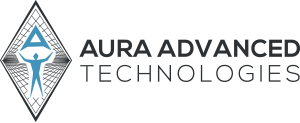The world of computing has evolved significantly over the past few years. With the advent of cloud computing and edge computing, organizations have been able to leverage advanced technologies to boost their productivity, efficiency, and profitability. In this blog post, we will explore the benefits of private cloud and edge computing and why organizations should adopt these technologies.
Private Cloud Computing
Private cloud computing is a model of cloud computing in which an organization’s IT infrastructure is dedicated to serving that organization alone. The private cloud can be hosted either on-premises or in a third-party data center. Unlike public cloud computing, private cloud computing provides a higher level of security and control.
One of the major benefits of private cloud computing is security. Private cloud computing provides a higher level of security than public cloud computing since the infrastructure is not shared with other organizations. This makes private cloud computing an excellent option for organizations that handle sensitive data and require a high level of security.
Another benefit of private cloud computing is control. Private cloud computing provides organizations with greater control over their IT infrastructure. Organizations can customize their infrastructure to meet their specific needs and can manage their infrastructure in-house.
Private cloud computing also offers better performance than public cloud computing. Since private cloud computing is dedicated to a single organization, there is less chance of congestion and bottlenecks that can occur with public cloud computing.
Edge Computing
Edge computing is a distributed computing paradigm that brings computation and data storage closer to the location where it is needed. This can be achieved by placing small data centers, servers, or network nodes closer to the end-users or IoT devices. By bringing computation and data storage closer to the edge, organizations can improve the performance of their applications and services.
One of the benefits of edge computing is low latency. Since data processing and storage happen closer to the edge, there is less delay in sending data back and forth between the end-users and the cloud. This is particularly important for applications that require real-time processing, such as autonomous vehicles and industrial automation.
Edge computing also offers better bandwidth utilization. By processing and storing data closer to the edge, organizations can reduce the amount of data that needs to be transmitted back and forth between the end-users and the cloud. This can reduce network congestion and improve the performance of applications and services.
Another benefit of edge computing is improved reliability. Since edge computing distributes computation and data storage across multiple locations, there is less risk of a single point of failure. This can improve the reliability of applications and services and reduce the risk of downtime.
Conclusion
Private cloud computing and edge computing are two advanced technologies that organizations can use to improve their productivity, efficiency, and profitability. Private cloud computing provides a higher level of security and control, while edge computing brings computation and data storage closer to the end-users. By adopting these technologies, organizations can stay ahead of the curve and gain a competitive edge in today’s fast-paced business world.
